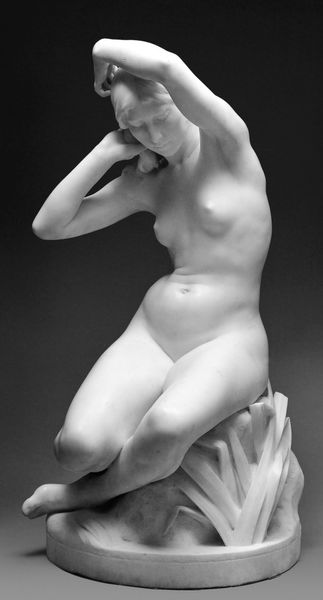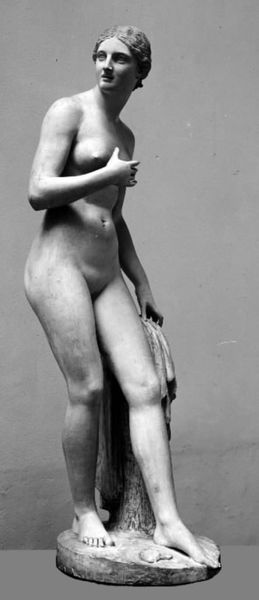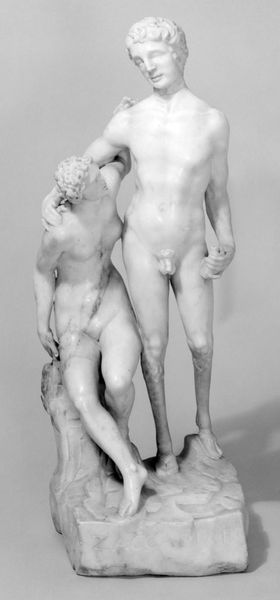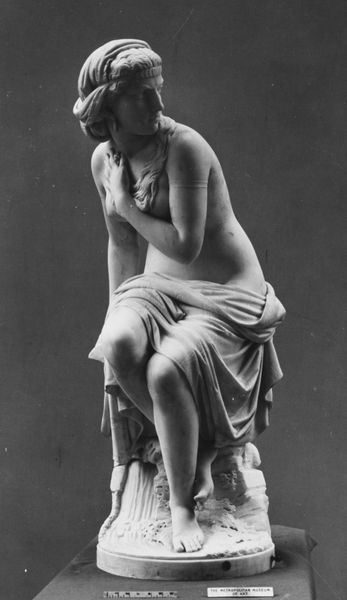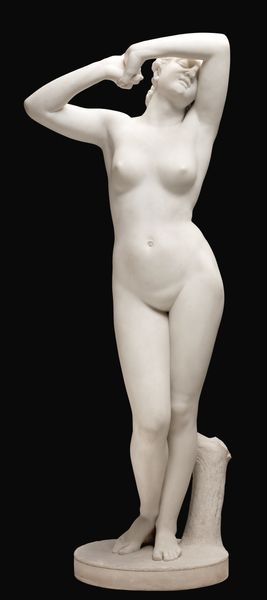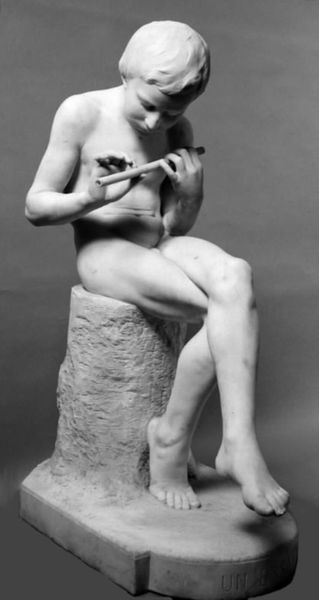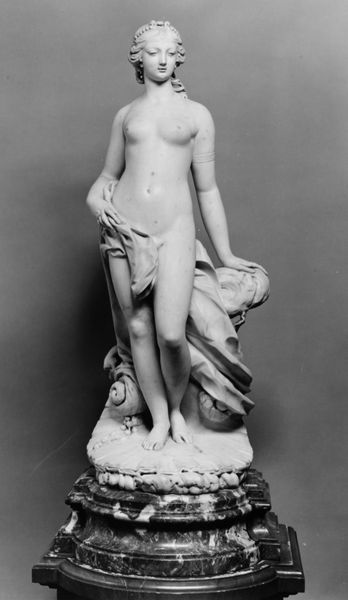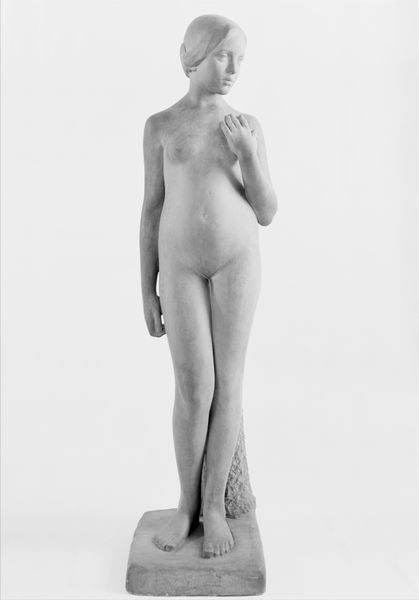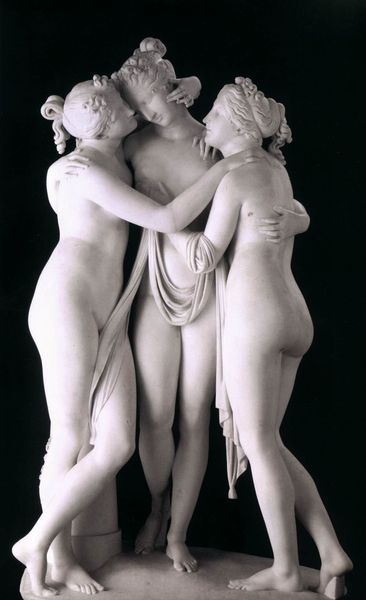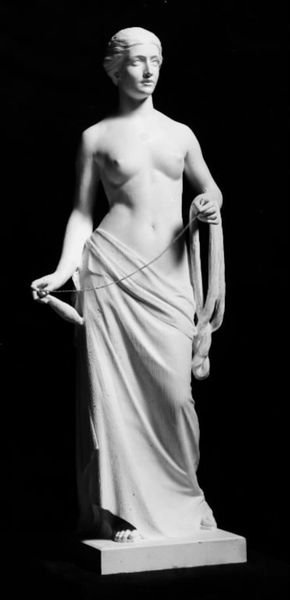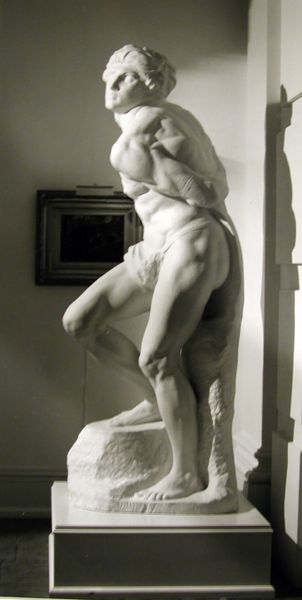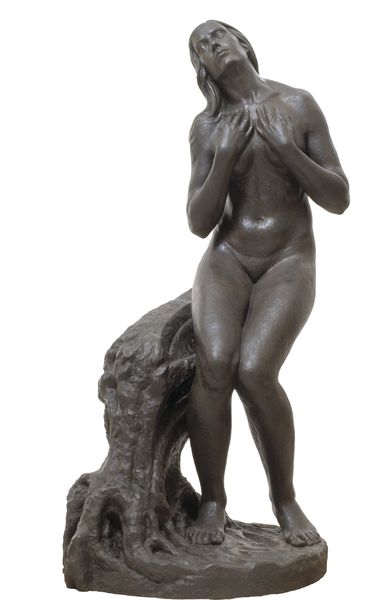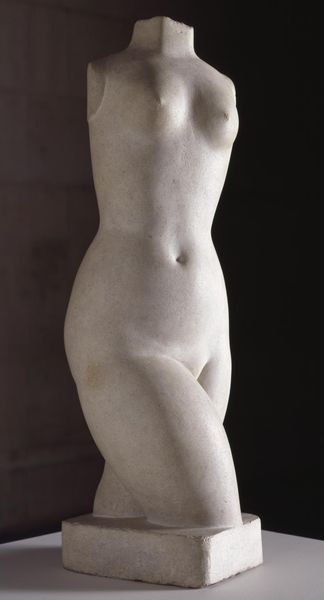
Dimensions: 41 1/2 x 15 x 17 in. (105.4 x 38.1 x 43.2 cm)
Copyright: Public Domain
Curator: This marble sculpture, crafted between 1862 and 1879, is titled "Mercury and Turtle." Editor: My immediate impression is one of poised serenity. The smooth marble finish, the careful contours—there's an undeniable sense of calm. Curator: Yes, it’s work that invites consideration of myth, and class dynamics through the male gaze. Editor: Indeed. Focusing on formal structure, the interplay of light across the figure's smooth skin draws one in. Observe the subtle modeling of muscle and bone, rendered with a keen attention to proportion and balance. The downward gaze emphasizes a contained inner world, wouldn't you agree? Curator: But we also should not isolate that from the power dynamics inherent in its representation of male authority over the natural world. It reflects that moment’s perception of what's masculine—one that privileges rationality. What does it tell us that Mercury isn’t grappling with the turtle as obstacle, but almost tenderly appraising the creature as he pauses in movement. The positioning serves not just compositional harmony, but perhaps the ambition for the colonial gaze to be recast as humane and reasonable, one capable of conquering while exhibiting restraint. Editor: The figure, in itself, stands alone in compositional unity, but his gaze brings something new to our perception of him. Curator: This sculpture reflects not just artistic skill but also reveals subtle yet impactful social positioning, challenging our conventional reading of aesthetic refinement through historical lenses. Editor: Viewing it from this vantage really has opened new doors to analyzing it. The emotional restraint of the sculpture, previously felt more in terms of form than its implications, now speak volumes to me about societal expectations and ideals of man.
Comments
No comments
Be the first to comment and join the conversation on the ultimate creative platform.
